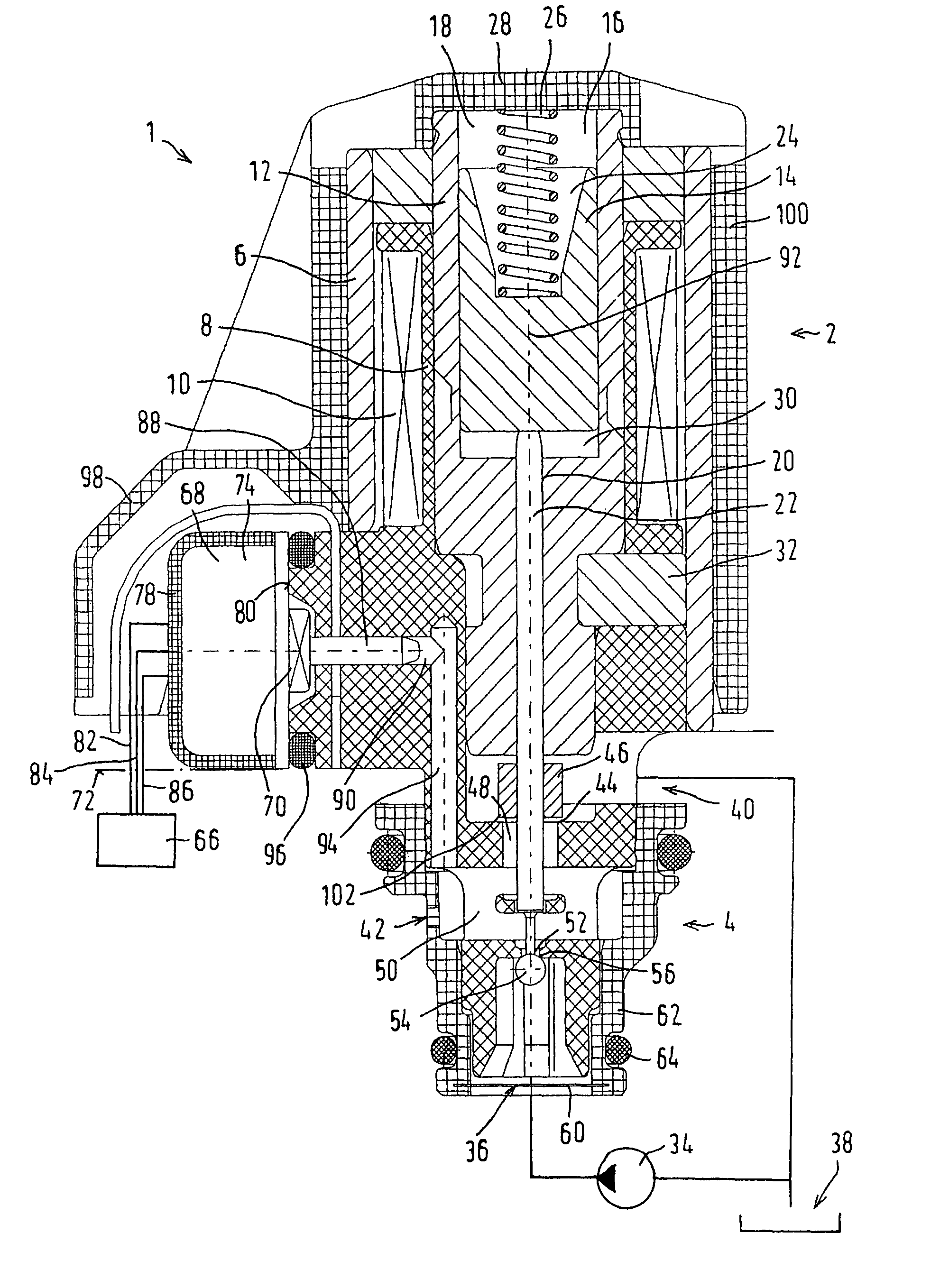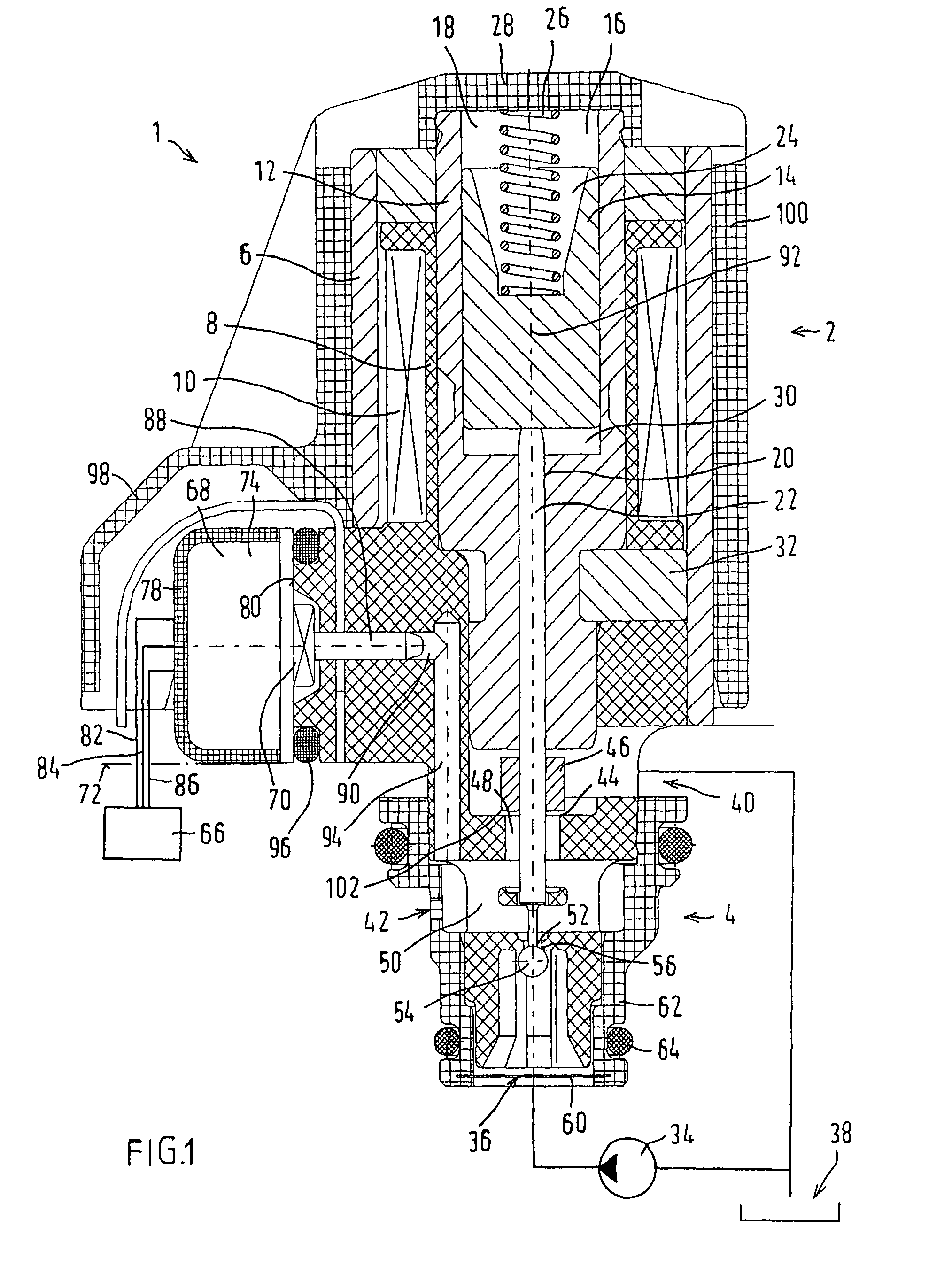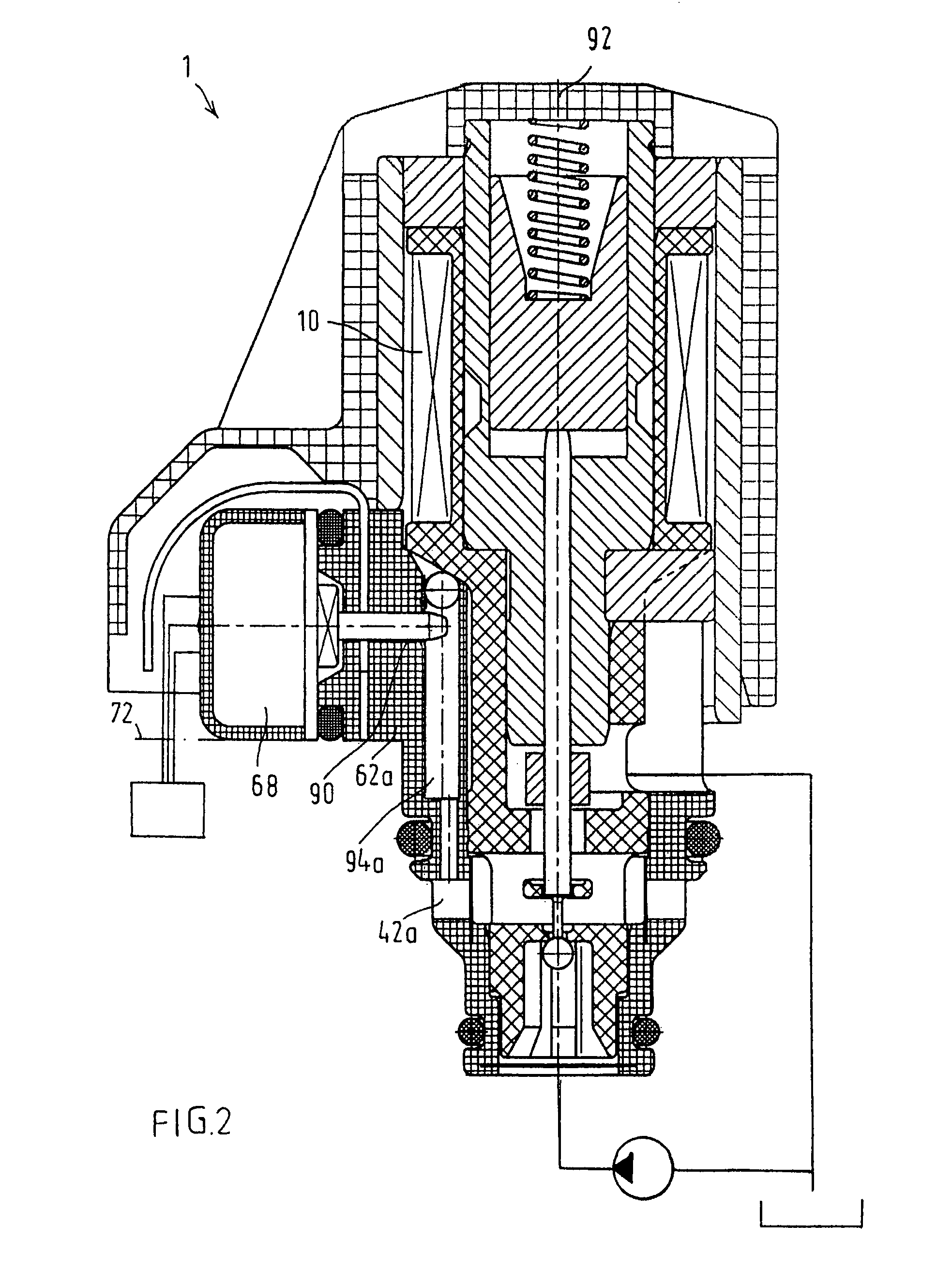Electromagnetic pressure regulating valve device having an integrated pressure sensor
a technology of electronic pressure regulation and valve device, which is applied in the direction of fluid pressure control, process and machine control, instruments, etc., can solve the problems of inability to adequately compensate either the time variance of the controlled system, stationary and dynamic performance is therefore unsatisfactory, and both the amplitude and phase of the signal change, so as to reduce the filter effect of the transmission link, the effect of reducing the filter effect and ensuring the accuracy of the control valv
- Summary
- Abstract
- Description
- Claims
- Application Information
AI Technical Summary
Benefits of technology
Problems solved by technology
Method used
Image
Examples
Embodiment Construction
[0018]The preferred exemplary embodiment shown in FIG. 1 of an electromagnetic pressure regulating valve 1 of a pressure regulating valve device according to the present invention is used, for example, to regulate the hydraulic control pressure of a hydraulic clutch in a stepped automatic transmission of a motor vehicle. Pressure regulating valve 1 includes, among other things, a solenoid part 2 and a valve part 4.
[0019]Solenoid part 2 is enclosed by a solenoid sleeve 6 and includes a coil 10 wound on a bobbin 8, a coil core 12 projecting into the interior of coil 10 and an armature 14 which is movably guided in the axial direction in coil core 12. For this purpose, coil core 12 has a stepped core hole 16 in whose larger-diameter section 18 armature 14 is guided, while an actuating piston 22 is located in a longitudinally movable manner in a hole section 20 of smaller diameter which is adjacent to the valve part, the actuating piston contacting an end face of armature 14 on one end....
PUM
 Login to View More
Login to View More Abstract
Description
Claims
Application Information
 Login to View More
Login to View More - R&D
- Intellectual Property
- Life Sciences
- Materials
- Tech Scout
- Unparalleled Data Quality
- Higher Quality Content
- 60% Fewer Hallucinations
Browse by: Latest US Patents, China's latest patents, Technical Efficacy Thesaurus, Application Domain, Technology Topic, Popular Technical Reports.
© 2025 PatSnap. All rights reserved.Legal|Privacy policy|Modern Slavery Act Transparency Statement|Sitemap|About US| Contact US: help@patsnap.com



